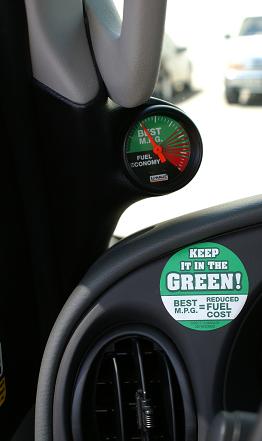MPG — three simple letters that could make all the difference in your next move. But how can those three letters make a difference you ask? Well, having a good idea of how many Miles per Gallon (aka MPG) you will be getting in your moving truck is an effective strategy for planning fuel stops and calculating costs when preparing for the move. And a well planned, prepared move is usually the least stressful one — and that’s what we all want, right?
In this post I’ll try to debunk the mystery that is MPG and help you plan for your next move. Also, although the numbers may change, the general principles apply to any vehicle, not just moving trucks!
What determines MPG ? — The first step of estimating the miles per gallon you’ll be getting on your next trip is having a basic understanding of the term. MPG is simply the amount of miles you can drive on one gallon of fuel. The EPA releases official estimates for most vehicles, but individual driving habits and other factors such as road conditions, vehicle load weight, and previous maintenance affect the actual number.
Choosing the right equipment — One of the best ways to maximize your possible MPG right from the start is to start with the right equipment. The number one sworn enemy of a high MPG is drag — think friction, just on a car at a high-speed. All U-Haul moving trucks are aerodynamically designed to reduce drag and raise fuel economy by 20%.
Towing — If you’re towing a trailer or a vehicle behind you your MPG will be a bit different from what is advertised. When choosing a trailer, you want to make sure to choose one that combines a low-profile design with maximum safety. Never risk the safety of your trailer, your valuables or yourself just to cut corners. U-Haul tow trailers do a nice job of meeting all of those characteristics — and even if you’re towing your own trailer, you want to remember to make sure it’s hooked up properly for maximum efficiency.
Do your research — With aerodynamics and towing options in mind, the best place to start is by researching information from the rental company. They should have the exact estimate for MPG listed on the site. Take U-Haul’s 15′ truck for example; the “10 MPG” estimate is listed directly on the page. Combine that number with the 40 gallon tank and you can expect to get about 400 miles for every fill-up.
Fuel economy gauge — U-Haul’s trucks are some of the only ones in the industry to have a fuel economy gauge. With the simple presence of keeping the dial on the green areas to increase fuel efficiency, keeping your eyes on this tool can really do wonders. Because of the fact that so many variables of MPG are on the fly — road conditions, speed, and load weight, the gauge is a good thing to check every now and then to keep maximize your fuel efficiency. But don’t check for too long — always remember to keep your eyes on the road.
Balance the load — A truck with no cargo will get a much better MPG than a fully loaded truck. In that same regard, a properly fully loaded truck will get a much better MPG than an improperly loaded truck. Always remember to load cargo intro trailers and trucks with 60% towards the front and 40% to the back. While keeping those variables in mind, remember to load evenly on both the left and right sides of the truck as well.
With those thoughts in mind and your research from websites, you should now be able to create a good guesstimate of just how many miles per gallon you will get. Combine that number with data from gas price websites and a fuel cost estimate should be coming into view.
Were there any tips that I missed? Any chance you’re an expert at drag coefficients and you’ve designed your own MPG increaser? Let us know in the comments below.
Related Posts:





